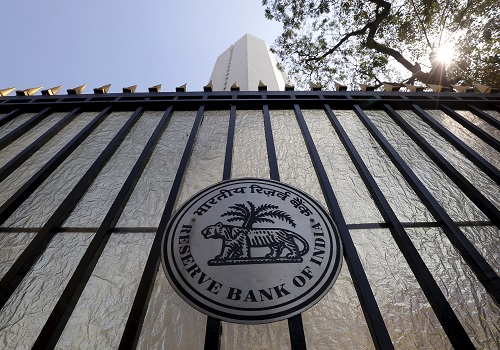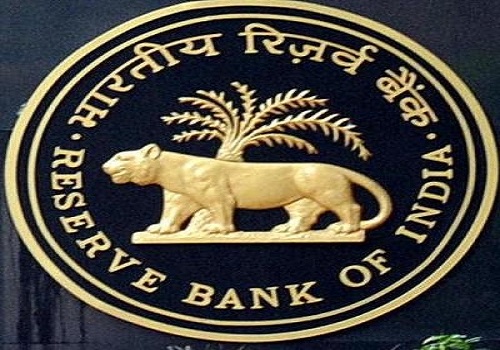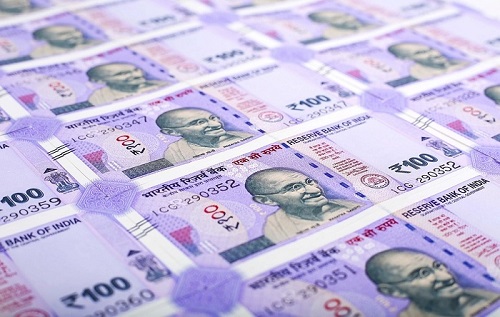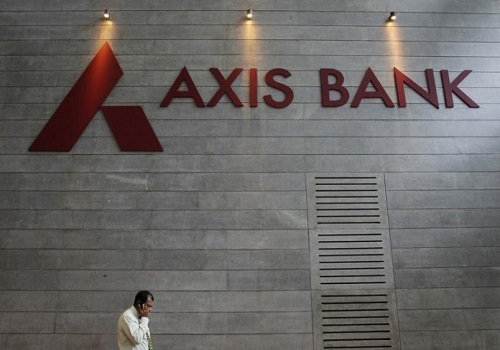Cottoncandy trading range for the day is 59070-60750 - Kedia Advisory

Follow us Now on Telegram ! Get daily 10 - 12 important updates on Business, Finance and Investment. Join our Telegram Channel
Gold
Gold demonstrated resilience, edging up by 0.2% to settle at 62004, buoyed by a slight pullback in the U.S. dollar and escalating tensions in the Middle East, reinforcing its safe-haven appeal. The cautious stance of Chicago Fed President Austan Goolsbee on delaying rate cuts, despite higher-than-expected consumer prices in January, reflects the delicate balancing act policymakers are facing amid economic uncertainties. Fed Bank of Atlanta President Raphael Bostic's openness to potential rate cuts in the coming months, contingent on more data regarding inflation pressures, adds a layer of uncertainty to the market. The World Gold Council's projection of increased gold demand in India, reaching 800-900 tonnes in 2024. Anticipated growth in gold purchases during the second half of the year, driven by favorable monsoons and consumer adaptation to higher prices, injects a seasonal and behavioral element into market dynamics. Attention is now turned to the release of minutes from the Fed's January policy meeting, offering insights into the potential timing of interest rate cuts. The market currently prices in a 77% chance of a cut in June, as indicated by the CME Fed Watch Tool, with lower interest rates diminishing the opportunity cost of holding bullion. From a technical standpoint, the market is undergoing short-covering, evidenced by a -0.62% drop in open interest to 13316, coupled with a price increase of 126 rupees. Gold finds support at 61905, with a potential test of 61805 levels below, while resistance is likely at 62105, and a breakthrough could lead to testing 62205.
Trading Ideas:
* Gold trading range for the day is 61805-62205.
* Gold rose amid pullback in and escalating tensions in the Middle East
* The demand for gold in India, is expected to increase to 800-900 tonnes in 2024
* UK cargo ship under attack in the Bab al-Mandab Strait off Yemen
Silver
Silver faced a decline of -1.12%, settling at 71306 as traders adjusted their positions in anticipation of potential rate cuts by the Federal Reserve. Federal Reserve Bank of Atlanta President Raphael Bostic expressed openness to lowering rates in the coming months, contingent on further data regarding inflation pressures. Bostic's comments about normalizing policy in the summer and the unexpected surge in January's producer price index, excluding food and energy, have added complexity to the interest rate outlook. Despite a week of disappointing U.S. economic data, including stronger-than-expected inflation and weakening spending, policymakers remain committed to a wait-and-see approach on interest rate cuts, acknowledging the challenges posed by the current economic landscape. The upcoming release of FOMC meeting minutes and statements from Fed officials will be closely watched for insights into the timing of the first rate cut. Traders, initially eyeing a reduction in March, now see a 53% likelihood of a 25bps cut in June, reflecting the evolving sentiment in the market. Technically, the market is undergoing long liquidation, with a -0.46% drop in open interest to 21566, coupled with a price decrease of -806 rupees. Silver finds support at 71110, with a potential test of 70910 levels below. On the upside, resistance is likely at 71580, and a breakthrough could lead to testing 71850. Traders should closely monitor economic indicators, Fed communications, and market sentiment for a nuanced understanding of silver's price trajectory in this environment of uncertainty.
Trading Ideas:
* Silver trading range for the day is 70910-71850.
* Silver dropped as traders continue to adjust their bets for the Fed's rate cuts.
* Fed’s Bostic said that while he needs more data to convince him inflation pressures are truly falling
* Fed signals 'patience' on rate cuts as data disappoints
Crude oil
Crude oil settled higher by 0.56%, closing at 6518, driven by ongoing conflict in the Middle East as Israeli raids affected Gaza Strip's infrastructure. The geopolitical tensions have contributed to the upward pressure on oil prices, reflecting concerns about potential disruptions in the region. North Dakota reported a decrease in oil production by 6,000 barrels per day in December, reaching 1.27 million bpd. Despite a record high number of producing wells, oil producers scaled back hydraulic fracturing activity in anticipation of colder weather and holiday-related reductions in activity. Iraq's commitment to OPEC decisions, including a voluntary production cut announced in December, aims to limit its output to no more than 4 million bpd, according to oil minister Hayan Abdel-Ghani. Progress in talks with international oil companies operating in Iraqi Kurdistan signals potential resolutions to disputes that have hindered northern oil exports. The U.S. EIA projects a rise in U.S. oil output from top shale-producing regions in March, reaching 9.7 million bpd, the highest in four months. This anticipated increase highlights the resilience of U.S. shale production despite fluctuations in market conditions. Technically, the market is witnessing short covering, with a -0.26% drop in open interest to 5007, coupled with a price increase of 36 rupees. Crude oil finds support at 6468, with a potential test of 6418 levels below. On the upside, resistance is likely at 6550, and a breakthrough could lead to testing 6582. Traders should monitor geopolitical developments, production trends, and market sentiment for informed decision-making in the dynamic crude oil market.
Trading Ideas:
* Crudeoil trading range for the day is 6418-6582.
* Crude oil gains as conflict in the Middle East continued over the weekend
* Oil output in North Dakota fell in Dec., despite record well count
* US oil output from top shale regions to rise in March – EIA
Natural gas
Natural gas experienced a decline of -2.48%, settling at 130, primarily influenced by near-record production, ample fuel storage, and warmer-than-average temperatures. Technical issues at Freeport LNG's export facility further limited gas flow to LNG export terminals, contributing to the downward pressure on prices, with record levels expected only upon the facility's return to full power. Mild winter temperatures have allowed utilities to bolster gas storage, with inventories currently surpassing normal levels by 15.9%. The increase in gas output to an average of 105.8 billion cubic feet per day (bcfd) in February compared to 102.1 bcfd in January reflects the ongoing abundance in supply. Meteorologists forecast continued mild weather until March 1, sustaining the oversupply conditions. The U.S. EIA projects a higher average natural gas spot price in 2024 and 2025 compared to the previous year, although it is expected to remain below the $3.00-per-million British thermal units (MMBtu) threshold. The EIA attributes the price forecast to growing demand outpacing supply increases, with a projected demand rise of 2.3 billion cubic feet per day (Bcf/d) and relatively flat supply in the current year. Technically, the market is undergoing long liquidation, evidenced by a -7.6% drop in open interest to 63375, coupled with a price decrease of -3.3 rupees. Natural gas finds support at 128.3, with a potential test of 126.6 levels below. On the upside, resistance is likely at 131.9, and a breakthrough could lead to testing 133.8.
Trading Ideas:
* Naturalgas trading range for the day is 126.6-133.8.
* Natural gas dropped driven by near-record production, abundant fuel storage.
* Technical issues at Freeport LNG's export facility have limited gas flow to LNG export terminals
* Gas output in February increased to an average of 105.8 bcfd compared to 102.1 bcfd in January
Copper
Copper experienced a marginal decline of -0.42%, settling at 720.15, influenced by China's central bank decision to keep key policy rates on medium-term loans steady. The market's attention also turned to China's property market concerns, while diminishing inventories provided some support to copper prices. As China emerges from the Lunar New Year holiday, traders will closely monitor signals of demand over the next couple of months, particularly during the seasonally strong period preceding the summer construction season. Copper stocks in LME registered warehouses have decreased by nearly 25% since late December, reaching their lowest levels since September 2023. The reduction in inventories, coupled with outflows, has contributed to narrowing the discount for cash over the three-month copper contract, which hit a record high above $110 a ton in February. China's current account surplus significantly decreased to USD 55.2 billion in Q4 of 2023 from USD 103.1 billion in the same period the previous year, marking the smallest surplus since a deficit in Q1 of 2020. The goods surplus fell to USD 153.6 billion from USD 161.3 billion, while the deficit in services account and primary income widened, reflecting shifts in trade dynamics. From a technical perspective, the market is witnessing long liquidation, with a -11.31% drop in open interest to 2706, accompanied by a price decline of -3.05 rupees. Copper finds support at 718.5, with a potential test of 716.7 levels below. On the upside, resistance is likely at 722.3, and a breakthrough could lead to testing 724.3.
Trading Ideas:
* Copper trading range for the day is 716.7-724.3.
* Copper slipped after China's central bank held policy rates on medium term loans
* Copper stocks in LME registered warehouses at 128,300 have dropped nearly 25% since late December
* Outflows have helped narrow the discount for the cash over the three-month copper contract.
Zinc
Zinc prices settled higher by 0.68%, closing at 215.75, driven by developments in the global zinc market. The delay in the start of zinc concentrate production at the Russian Ozernoye mine until at least the third quarter of 2024, with full capacity ramp-up expected in 2025, contributed to the positive sentiment. This delay in supply, coupled with recent large inflows into LME warehouses, widened the discount for cash over the three-month zinc contract to four-month highs. Construction activity in China is anticipated to increase in the coming weeks as the seasonal winter lull comes to an end. However, zinc inventories have rebounded recently, rising by 14% on the London Metal Exchange (LME) over the past 10 days to a one-month high of 216,675 metric tons. The rebound in stocks is attributed to China's property troubles impacting demand. On the Shanghai Futures Exchange, zinc stocks jumped by 21% in a week, partially due to restocking ahead of China's Lunar New Year holiday. The People's Bank of China (PBoC) maintained the rate of one-year policy loans (medium-term lending facility - MLF) at 2.5%, injecting a net CNY 1 billion into the system. This move aims to prevent additional pressure on the yuan and assess the impact of recent support measures for the economy. Technically, the market is undergoing short covering, with a -13.85% drop in open interest to 2725, coupled with a price increase of 1.45 rupees. Zinc finds support at 214.1, with a potential test of 212.5 levels below. On the upside, resistance is likely at 216.9, and a breakthrough could lead to testing 218.1.
Trading Ideas:
* Zinc trading range for the day is 212.5-218.1.
* Zinc gains as Russian new Ozernoye mine has delayed the start of production
* The discount for the cash over the three-month zinc contract has widened to four-month highs due to recent large inflows into LME warehouses.
* Construction activity in China is expected to increase in coming weeks
Aluminium
Aluminium faced a decline of -0.8%, settling at 197.45, influenced by inflation data raising uncertainty about the Federal Reserve's timeline for interest rate adjustments. Trading resumed in China after the week-long Lunar New Year holiday, bringing the market's attention to economic indicators and policy decisions from the People's Bank of China (PBoC). China's current account surplus notably decreased to USD 55.2 billion in Q4 of 2023 from USD 103.1 billion in the same period the previous year. This preliminary estimate marked the smallest surplus since Q1 of 2020, with the goods surplus falling to USD 153.6 billion from USD 161.3 billion in the prior year. The PBoC maintained the rate of CNY 500 billion worth of one-year policy loans, known as the medium-term lending facility (MLF), at 2.5%, aiming to prevent pressure on the yuan and assess the impact of recent support measures for the economy. Despite a net injection of CNY 1 billion into the system through MLF, the smallest since last August, the PBoC emphasized the goal to "maintain banking system liquidity reasonably ample," particularly after the week-long Lunar New Year holiday. From a technical standpoint, the market is witnessing fresh selling, with a 1.1% increase in open interest to 2838, coupled with a price decrease of -1.6 rupees. Aluminium finds support at 196.6, with a potential test of 195.6 levels below. On the upside, resistance is likely at 198.9, and a breakthrough could lead to testing 200.2. Traders should closely monitor economic indicators, policy developments, and market sentiment for nuanced decision-making in the aluminium market.
Trading Ideas:
* Aluminium trading range for the day is 195.6-200.2.
* Aluminium dropped after inflation data cast doubts on when Fed would begin to ease interest rates
* PBOC kept the rate of CNY 500 billion worth of one-year policy loans to some financial institutions, at 2.5%.
* China's current account surplus sharply decreased to USD 55.2 billion in Q4 of 2023
Cottoncandy
Cottoncandy prices closed higher by 0.3% at 60080, driven by concerns over supply and sustained cotton consumption. The 2023/24 U.S. cotton balance sheet revealed lower ending stocks, higher exports, and lower mill use, maintaining unchanged production. The export forecast was raised to 12.3 million bales, contributing to ending stocks estimated at 2.8 million bales, equivalent to 20% of total disappearance. World cotton ending stocks for 2023/24 were nearly 700,000 bales lower due to lower beginning stocks and production. India's cotton exports in February are set to reach the highest level in two years, with contracts signed for 400,000 bales, driven by competitive pricing. The country's cotton production for the 2023/24 marketing year is expected to fall 7.7% from the previous year to 29.41 million bales, the lowest since 2007/08. Despite the decline in production, India is poised to export 2 million bales, surpassing earlier expectations. The Cotton Association of India (CAI) maintains estimates for domestic consumption at 311 lakh bales for the 2023-24 season. The pressing estimate for the season is at 294.10 lakh bales. CAI notes a decline in pink bollworm infestation, reducing from 30.62% in 2017-18 to 10.80% in 2022-23. Technically, the market is witnessing fresh buying, with a 0.44% increase in open interest to 458, coupled with a price rise of 180 rupees. Cottoncandy finds support at 59580, with a potential test of 59070 levels below. On the upside, resistance is likely at 60420, and a breakthrough could lead to testing 60750. Traders should closely monitor global cotton supply dynamics, export trends, and pest infestation for informed decision-making in the Cottoncandy market.
Trading Ideas:
* Cottoncandy trading range for the day is 59070-60750.
* Cotton gains spurred by concerns over supply and sustained cotton consumption
* USDA weekly sales report a 69% increase in exports from previous week
* CAI estimates domestic consumption for the 2023-24 season to remain flat at 311 lakh bales.
* In Rajkot, a major spot market, the price ended at 27725.7 Rupees gained by 0.25 percent.
Turmeric
Turmeric registered a gain of 1.26%, settling at 15382, primarily supported by reduced supplies in the spot market. However, the upside is capped as buying activities have been slower, anticipating the release of stocks ahead of the commencement of new crops. The delayed harvesting of the new crop and tighter ending stocks are expected to maintain positive sentiments in the turmeric market in the near term. Export activities are projected to pick up in the wake of upcoming festivals, although recent months have seen a slowdown. Pressure on prices is noted due to improved crop conditions resulting from favorable weather. Concerns among Maharashtra farmers over the location of PM Modi's Turmeric Board in Telangana add a layer of uncertainty to market dynamics, especially with expectations of a 20–25% decline in turmeric seeding this year in various regions. Turmeric exports during Apr-Dec 2023 dropped by 2.27% at 121,171.01 tonnes compared to the same period in 2022. However, December 2023 witnessed a rise of 21.47% in exports from November 2023. Imports during Apr-Dec 2023 dropped by 25.43%, indicating a decrease in demand for imported turmeric. In Nizamabad, a major spot market, the price ended at 14220.25 Rupees, gaining 2.43%. Technically, the market is undergoing short-covering, with a -0.29% drop in open interest to 13995, coupled with a price increase of 192 rupees. Turmeric finds support at 15040, with a potential test of 14700 levels below. On the upside, resistance is likely at 15580, and a breakthrough could lead to testing 15780.
Trading Ideas:
* Turmeric trading range for the day is 14700-15780.
* Turmeric gains supported by reduced supplies in the spot market.
* Delayed harvesting of new crop and tighter ending stocks is likely to keep market sentiments up
* Export has been slow down in recent months and expected to increase in wake of series of festivals ahead.
* In Nizamabad, a major spot market, the price ended at 14220.25 Rupees gained by 2.43 percent.
Jeera
Jeera prices rebounded by 1.44%, closing at 25745, driven by short-covering activities following a previous drop attributed to higher production expectations in key cultivating states of Gujarat and Rajasthan. The current rabi season witnessed a four-year high in jeera acreage, with farmers expanding cultivation due to favorable market prices. Gujarat's jeera cultivation increased by a significant 160%, covering 5.60 lakh hectares compared to the previous year's 2.75 lakh hectares. Rajasthan also saw a 25% rise, reaching 6.90 lakh hectares. While India anticipates a potentially bumper crop, challenges such as lower water availability, fewer cold days, and concerns about fusarium wilt and pest attacks could impact production. Additionally, global demand for Indian jeera has declined as buyers prefer alternatives like Syria and Turkey due to higher domestic prices. Jeera exports from April to December 2023 dropped by 29.95% at 96,701.43 tonnes compared to the same period in 2022. However, in December 2023, jeera exports showed a notable increase of 51.05% compared to November 2023, reaching 12,234.27 tonnes. Technically, the market is undergoing short-covering, with a -2.13% drop in open interest to 2346, coupled with a price increase of 365 rupees. Jeera finds support at 25310, with a potential test of 24870 levels below. On the upside, resistance is likely at 26090, and a breakthrough could lead to testing 26430. Traders should closely monitor weather conditions, pest threats, and global demand trends for a comprehensive understanding of the jeera market.
Trading Ideas:
* Jeera trading range for the day is 24870-26430.
* Jeera gains on short covering after prices dropped due to higher production prospects
* In Gujarat, Cumin sowing witnessed very strong growth by nearly 103% with 530,030.00 hectares against sown area of 2022
* Stockists are showing interest in buying on recent downfall in prices triggering short covering.
* In Unjha, a major spot market, the price ended at 29624.9 Rupees gained by 0.34 percent.
Views express by all participants are for information & academic purpose only. Kindly read disclaimer before referring below views. Click Here For Disclaimer












 320-x-100_uti_gold.jpg" alt="Advertisement">
320-x-100_uti_gold.jpg" alt="Advertisement">










